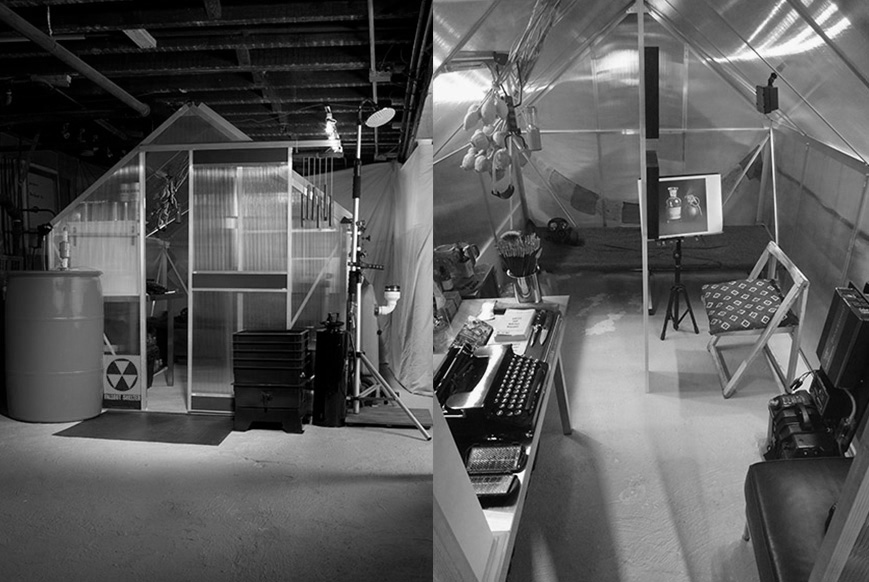

Adam Stennett. Artist Survival Shack. 2012-13. aluminum and polycarbonate greenhouse skeleton, 70 percent solar shade, army cot with mosquito netting, wool army blanket, sleeping bag, 100 watt/100ah solar panel generator 12V DC system with 1500/3000W 110 AC inverter, 12V water boiler, 55 gallon rainwater collection system, water filtration device, gas mask, 12 oz. cans of vintage emergency drinking water, instant oatmeal, minute rice, sardine tins, saltines, tortillas, couscous, bean flour, coffee, dried opium poppies, 3.5 gallon pressurized solar hot water heater and shower, solar stove/coffee maker using parabolic mirror, fresnel lens, cast iron skillet, magnesium fire starter, solar rechargeable AA and AAA batteries, AM / FM / WB pocket radio, 36 shoe pouch vertical grow wall and trellis, upside down tomato/basil, spinach pedestal, secondary elevated mini cold frame greenhouse, vermiculture composting toilet, 11 gallon portable urine collection system, 160 LED dimmable light panel (rechargeable), rat traps, sling shot, aerosol / BBQ igniter powered potato gun, Aquanet hairspray, hatchet, machete, hobo tool, vintage typewriter, wooden painting support plank, folding chair with cushion, paint mixing table, paint brushes, paint, paper, stencils, t-shirts, spray paint, camera, laptop, photo printer, Tibetan Buddhist prayer flags, and vintage bamboo wind chimes, 78 x 78 x 114 inches.
The Artist Survival Shack project grew out of the experience of living and working as an artist in New York for over eighteen years and finding ways to meet my basic needs while maximizing time to make art. I have lived in raw and unorthodox spaces, lived in dangerous neighborhoods, assisted other artists, moved to a cabin in the woods for three month stints, slept on an army cot in my studio, and leveraged 0% credit card offers. The goal has always been to work less and paint more. The question: How to minimize expenses and maximize art making time? The survival shack is the sum of those experiences spliced with an ongoing study of awareness, perception and absurdity.
I plan to install an artist survival shack in a high-visibility, culturally relevant outdoor area and "squat" in that location for an extended period of time. This could be on a museum rooftop, in an open field or somewhere more remote. The idea is to combine elements of a survivalist shack, a la Ted Kaczynski, with a minimal artist studio, replete with all the allusions that such a mash-up entails. On the one hand it will simply be a functional, efficient space containing everything an artist needs to live and work, on the other, it will be a zone of “extremist” activity, apart from ordinary society and, quite literally, “off the grid.”
The shack calls attention to the outsider/outlaw role artists have traditionally been accorded by society and draws an implicit, and uncomfortable, parallel between the activities of the solitary artist pursuing his vision and those of the lone mad man plotting havoc. The work is not meant to resolve this idea, but to bring it more fully into view. Thus, the transparency of the structure, and its placement in a public setting, are key.
The supplies, food and water I arrive with will be the only supplies I will have access to and I will not leave the area for the duration of the performance (projected as 1 month). The focus of my stay will be to survive physically and spiritually and to create a new body of work, including paintings, video works and a journal documenting the process while living off the grid with no expenses. The task is meant to be physically grueling, in the tradition of performances by Chris Burden, and others. Its difficulty is part of its meaning—it plays on the mythology of the artist, and the idea that personal sacrifice is central to the heroic act of artistic creation.
The project is meant to raise varied themes—ranging from environmentalism, green design, sustainable agriculture, mind-altering substances, visionary states, and utopia, to paranoia, separatism, surveillance, security, economic collapse, and apocalypse—and to hold them all in an uneasy tension. At the end of the performance, the Artist Survival Shack, paintings, videos and journal will be exhibited together in a gallery or museum setting.
Adam Stennett was born in Kotzebue, Alaska in 1972, grew up in Oregon and lives in Brooklyn. His work is in numerous public and private collections and has been widely exhibited in the U.S. and internationally including group exhibitions at Centro de la Imagen in Mexico City, The Portland Art Museum, The Chelsea Art Museum, Hudson Valley Center for Contemporary Art and The National Arts Club. He most recently released a limited edition print with Exhibition A based in New York.
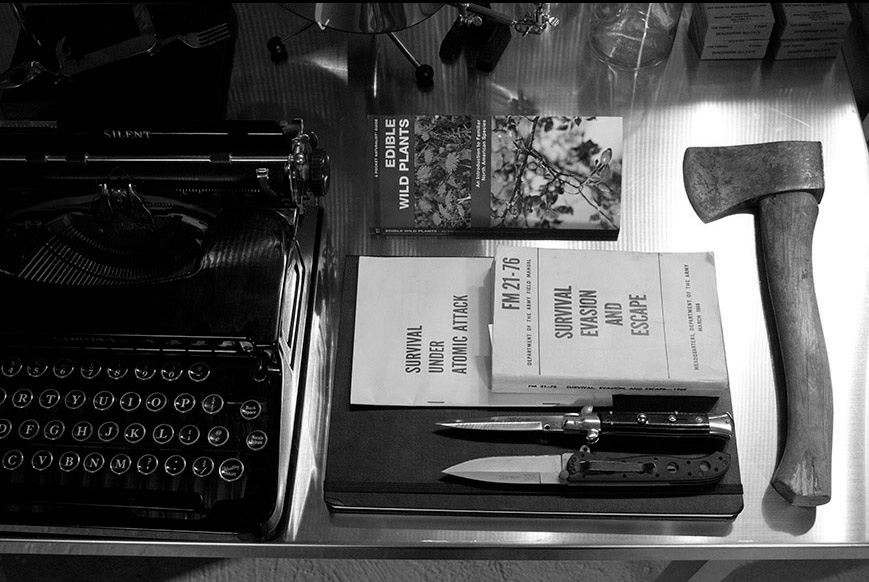
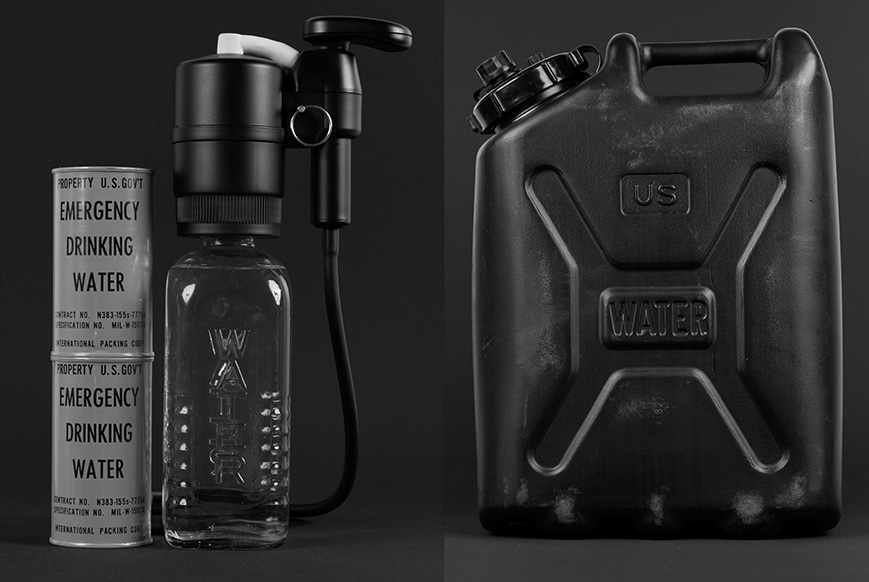
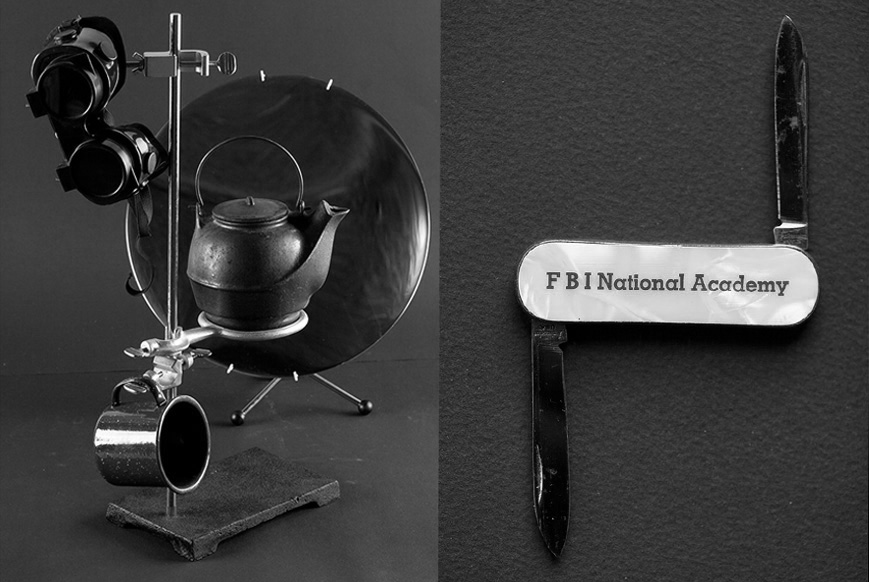
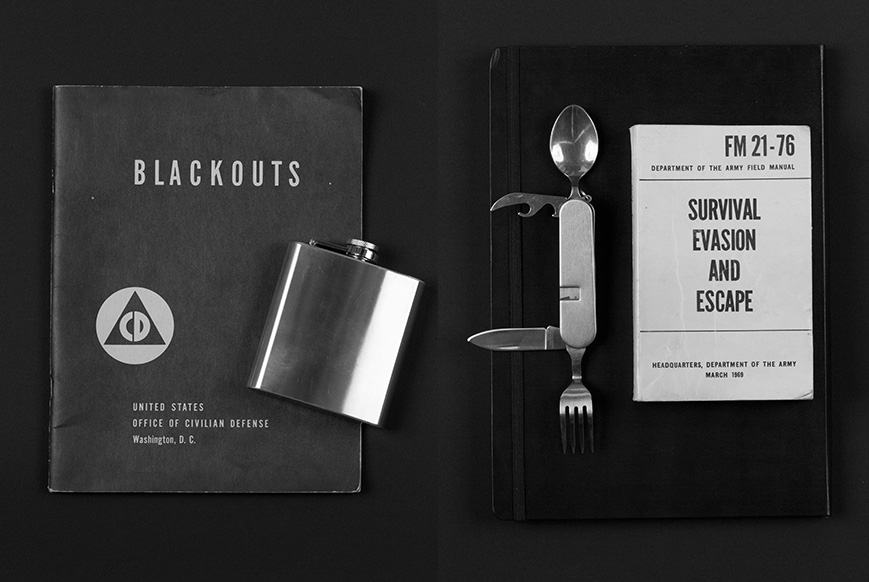
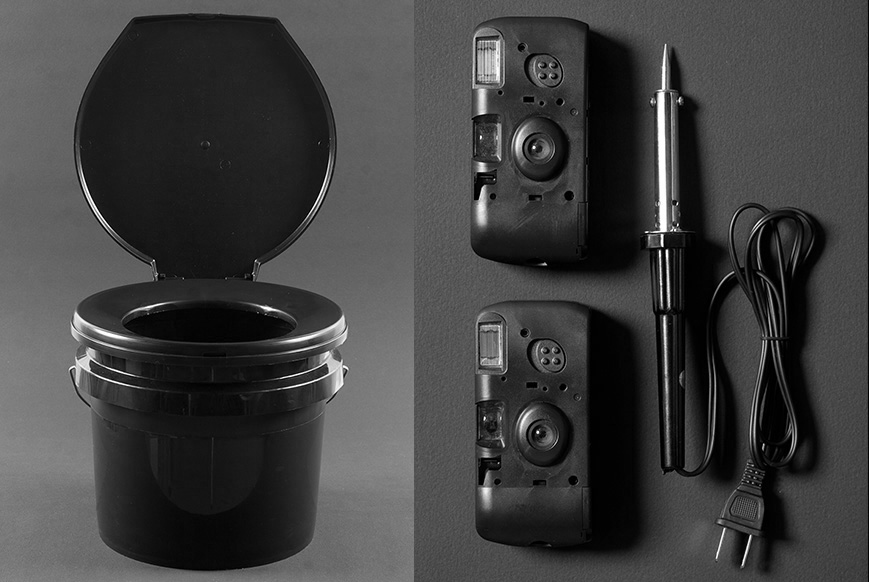
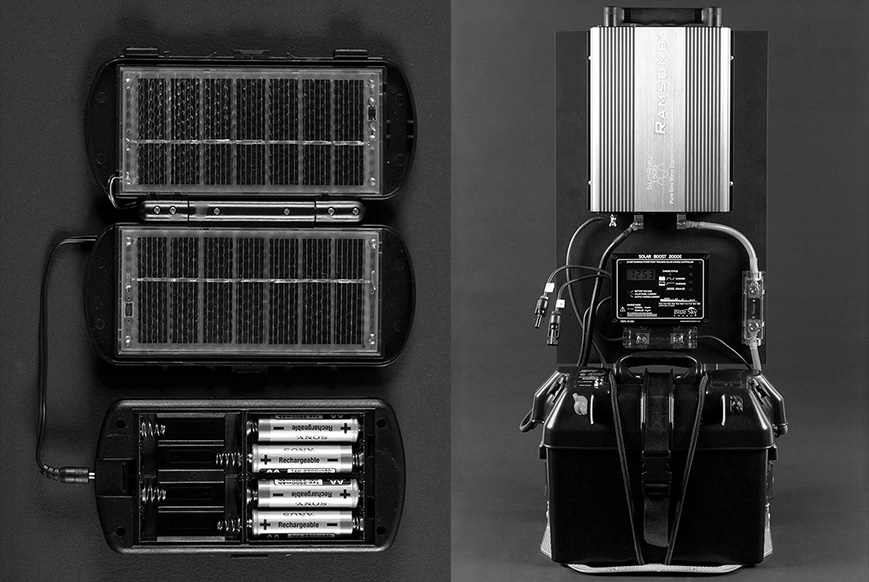
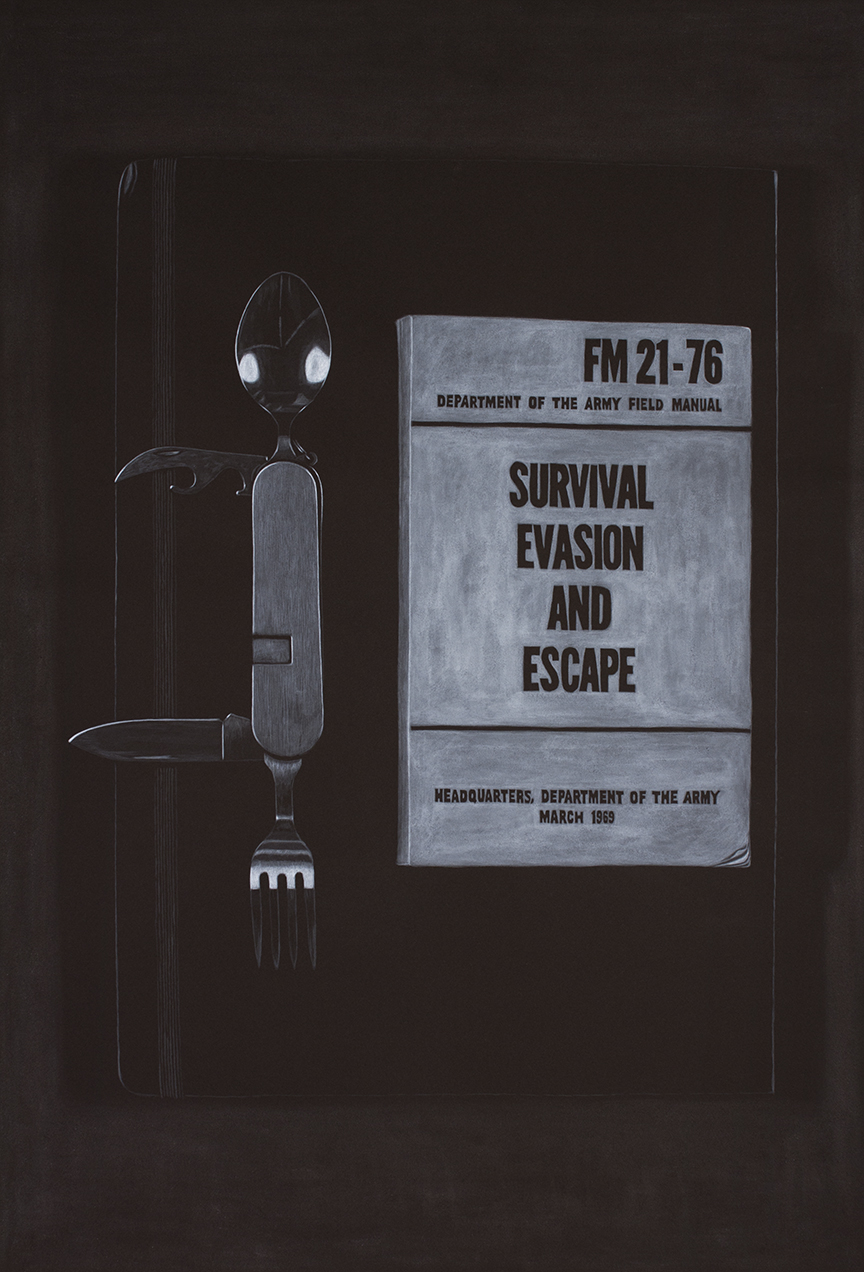
Adam Stennett. Survival Evasion and Escape with Hobo Tool. 2013. acrylic on paper, 44x30 inches.
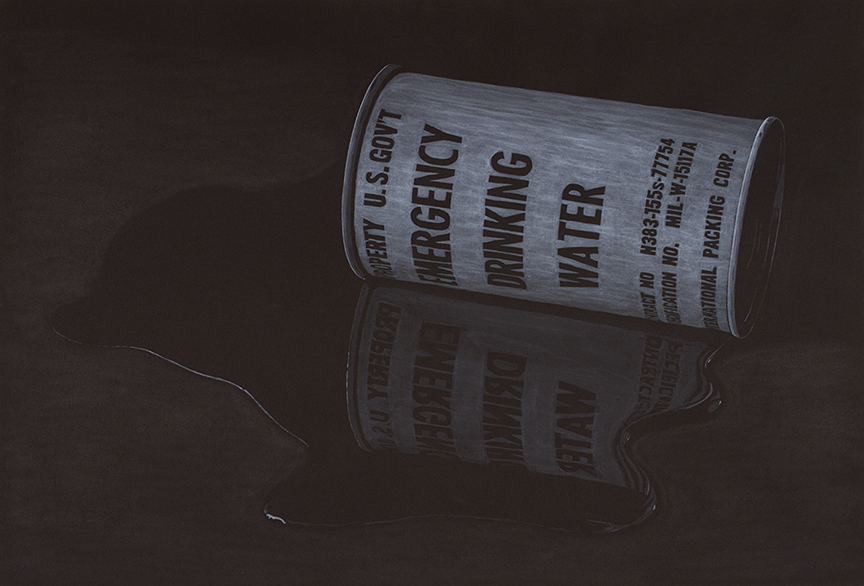
Adam Stennett. Emergency Drinking Water Spill. 2013. acrylic on paper, 30x44 inches.
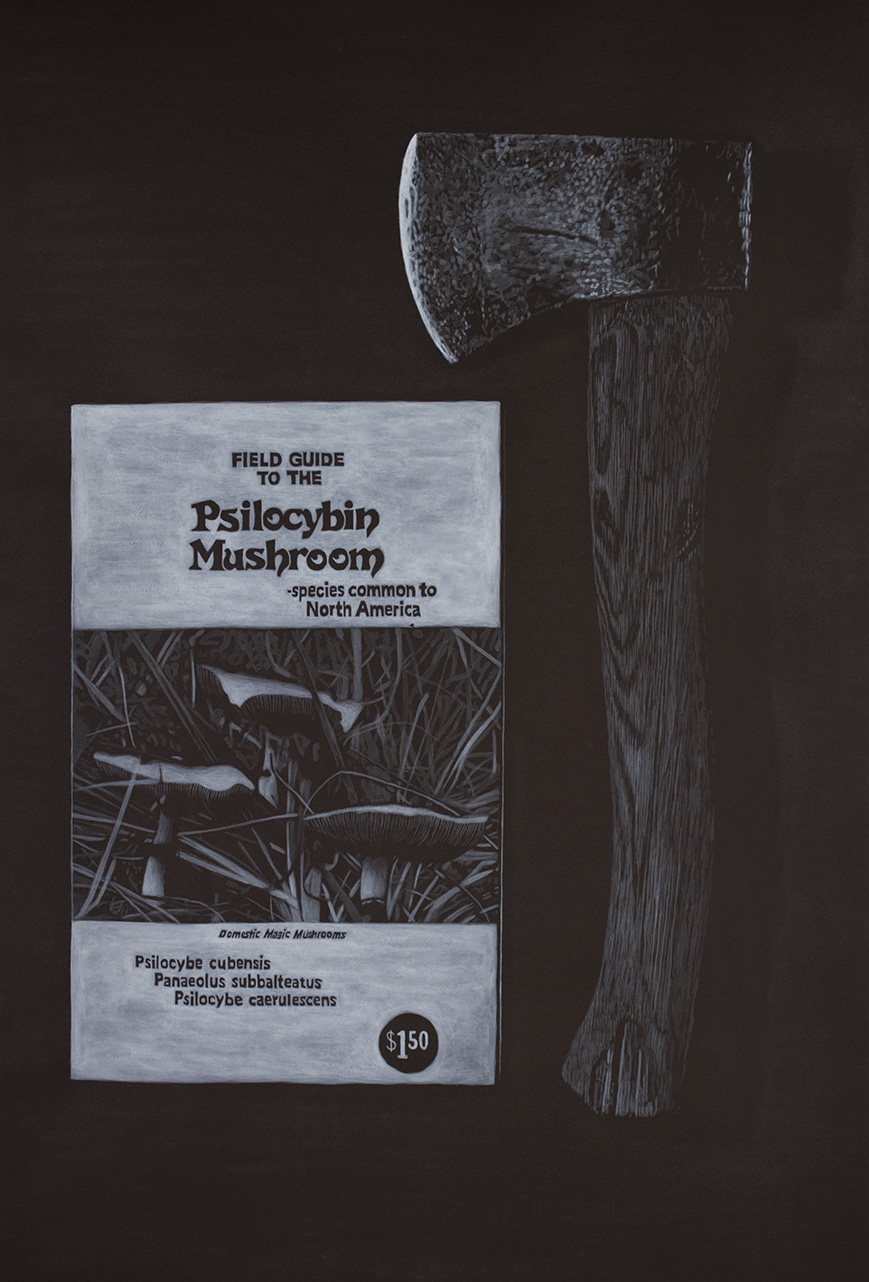
Adam Stennett. Mushroom Field Guide and Hatchet. 2013. acrylic on paper, 44x30 inches.
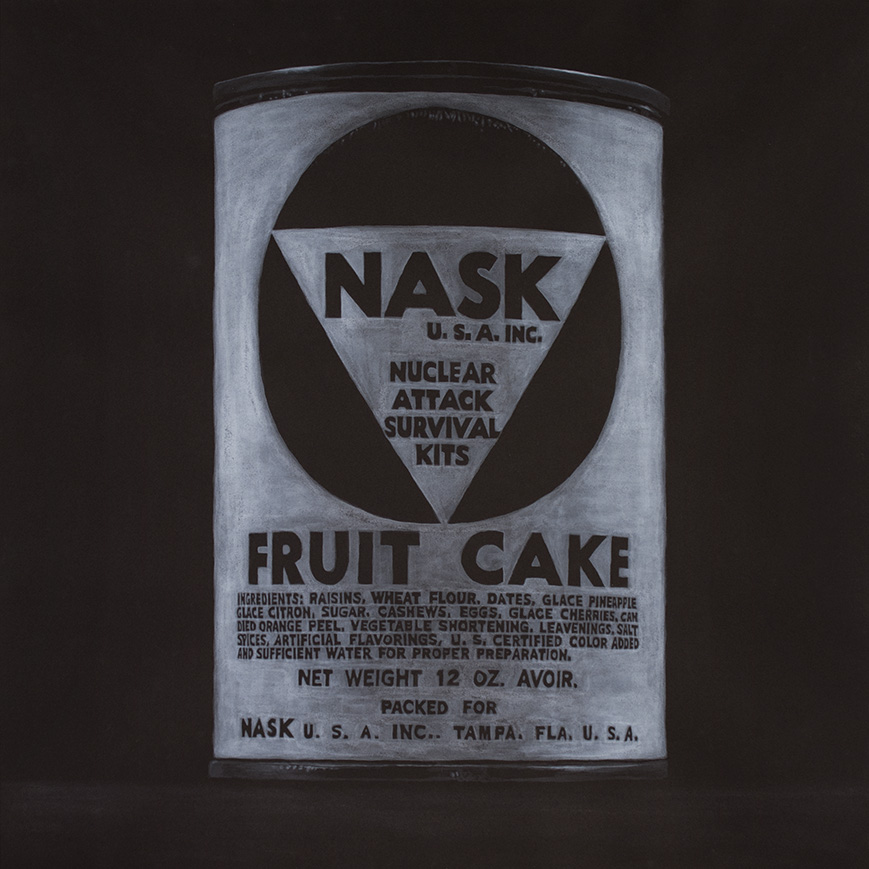
Adam Stennett. Nuclear Attack Survival Fruit Cake. 2013. acrylic on paper, 30x30 inches.